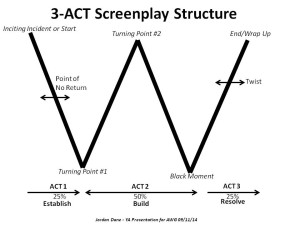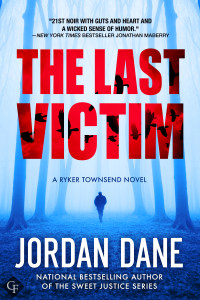A story has been niggling my brain for the past week. It tickles, in a good way. It started out as a vague melange of unconnected notions (like walking down a dark tunnel) until I started to define a premise and narrow the focus as if I had a light to guide me. Through online research of headline type tragedies, I searched for something with punch that would push me into the almost uncomfortable zone. I developed a loose character profile, playing with gender for the main character, but I needed more.
Over the last two days, I’ve refined my ideas about the story and “fleshed it out” in a way that excites me the most. I can’t share my book idea yet, but I’ve made notes of my process to share here at TKZ. Here are my steps going forward.
1.) Imagine basic ‘what ifs” about a potential character (a storyteller) and a problem–an unfathomable tragedy, an emotionally charged story concept, or a compelling situation–to create a list of “what if” scenarios. One story idea can have many “what ifs.” In SILENCE OF THE LAMBS, another “what if” could center on Hannibal or Crawford who risks his career and reputation on an FBI trainee. Brainstorm a list before you narrow it down to the one you want to develop as the foundation starting point to your story.
2.) Next, whose story will it be? Let’s talk character. Who has the most to lose? Pick the best character(s) to tell the story. Then decide how you want to “punish” them to test their worthiness for a starring role in your book.
3.) What is the external conflict between the main players (villain or adversary included)? But a good story is not only about the obvious conflict. Flawed characters have double the challenges. How will their internal crutches (their inherent weaknesses) keep them from getting what they want & add to the stress of the conflict? Make the story a personal and intimate journey.
4.) What’s at stake & how will the stakes escalate and play out? Maximize the emotional impact by ramping up the conflict between two main players at odds with each other. Yes, they could be on the same side, but pit them against each other to make things progressively worse and see how they’ll make it through.
5.) Now draft your “pitch” or a premise. You have your basic story ideas – your cast of characters, the conflict, the escalating stakes and a general sense of how things will play out, so you’re ready to draft a “pitch” or develop a premise that best fits your story. Something that would make an agent, editor, or reader say, “Wow, I have to read that.”
Here’s a basic premise example for SILENCE OF THE LAMBS:
A young female FBI trainee must barter her intimate secrets with an infamous psychopath held in solitary confinement to gain his help in catching a serial killer who’s killing women for their skins.
Notice there’s a well-defined protagonist, a formidable antagonist, a sense of the setting, conflict and stakes, and a notion of how the action will play out. The protagonist is up against forces that seem much bigger than she is. The stakes are high. If she fails, more women die. A premise works best when it’s about a vulnerable character with a formidable problem that would seem compelling to the reader.
A good premise should:
- Be concise
- Be evocative
- Be framed from a “what if” question
- Be written in present tense with an easily understood sentence structure that makes the story seem familiar yet with a hook or difference to stand out from other books.
- It should contain a character, a conflict, and a hook.
- It should have universal appeal
- Be limited in word count (maybe up to 35 words or less, or 2-3 concise sentences)
- The core story should be centered on an idea that jumps out at anyone.
A word of caution:
Do not overload the story with too many focal points or subplots that take away or distract from the main character(s) plight. Keep a laser focus. If the premise is compelling enough, the story won’t need embellishment.
From this point forward: Now that I’ve developed a more focused idea for a new book, I will draft a general plot using a method that’s worked for me and one that I’ve blogged about before at TKZ: The Author’s Bucket List on Plotting Structure. Using the shape of a “W” to remind me, I’ll create the inciting incident, the point of no return, turning points, the black moment, and the twisty wrap up in 7 points that will get me started. A high level outline. Since I’m an impatient writer, I usually start to write the beginning to play with what will work best. If I’m writing on proposal, I will draft a 5-7 page synopsis to go along with the writing sample to a publisher. I like having a fuller synopsis, than merely my 7 point “W’ outline, to develop the story line in a way that guides me as I write. I can incorporate character motivation and ramp up the conflict in such a synopsis so I don’t forget any necessary plot points. At this point, I am on my way and writing in the zone.
Here is a visual idea of the “W” plotting I use: It a visual summary of my blog post.

DISCUSSION EXERCISE: Write a brief yet effective premise for any of these 5 well- known movies:
1.) Silence of the Lambs (Can you do one from Hannibal’s perspective?}
2.) Jaws
3.) It’s a Wonderful Life
4.) Hunger Games
5.) Wizard of Oz
 The Last Victim coming Oct 30, 2015 in print and ebook. Available for ebook preorder through Amazon Kindle at a discounted price.
The Last Victim coming Oct 30, 2015 in print and ebook. Available for ebook preorder through Amazon Kindle at a discounted price.
Enter Goodreads GIVEAWAY at this LINK. Win one of 15 signed print copies See rules and enter.


Funny you should mention Silence of the Lambs. A friend just sent me a first edition hardcover in pristine condition. He found 3 (all perfect) at a used book store for $6.00 a piece. Can you imagine? First editions in this condition go for hundreds on Amazon. I’m off to enter your giveaway. Thanks for the link, Jordan!
I’m jealous, Sue. When NBC first aired the TV series Hannibal, I found my stash of Thomas Harris books and reread them.
Good friend to share his good fortune.
Here’s why Thomas Harris is such a great writer. His novel RED DRAGON has been made into 2 movies and a TV series. Yet in all three versions, the dialog was not rewritten or modified but is straight out of the book. http://www.avclub.com/article/compare-competing-cannibals-same-red-dragon-scene–224669
Yes, I recognized his dialogue, one of the reasons I wanted to reread. Definite homage.
Thanks for the reminder, Joe.
Your point about keeping things streamlined, plot-wise, is a good one. I have a friend (published) who struggles with this all the time. Her plotting brain is so active that she often finds herself overwhelmed with digressions, subplots and complications. As you say, every good plot needs complexity….but the BASIC plot line, the one that is at the heart of your story, can often be the simplest idea/structure upon which you put your special imprint.
I think those diverging points could be red herrings planted during the writing but nothing derails a solid foundation faster than an overdose of subplots or too many characters that lose the reader. Thanks, Kris
Thanks for that JD and Kris. I’m struggling with subplots and complications right now.
Subplots can ebb and flow in the story to affect pace in a positive way. When the main plot needs to cool down to give the reader a break, a subplot can intrigue or add mystery elements that keep things interesting. But the core of the story, the premise, should be the star of the show. Good luck, Jim.
So timely! I’m working on all of this right now. A restructuring can be a difficult thing… these items all help a lot. It is taking a bit longer than I thought it would (imagine that I couldn’t just sit down and write a “W” for all of my “mains” in a week. Oh well, sifting through numerous options and new options is gradually leading to a pairing down and streamlining of things things. It led to a bit more research and a bit of binge-watching and binge-reading tucked in there. It’s simmering right now as I warm up the edges and stir the pot every day.
I’m working on having the premise streamlined, the character and murdered herds thinned, and my sliding “W” solidified over the long weekend. I want to get back in there and get finished. Going through this process with what I already know and have done has been really good for me. Sometimes I tend to overthink things and I need to let them boil down a bit so I can scoop the foam-slim from the top and get down to the good stuff.
Thanks for the review and the re-cap! 😀
PS – I bought your book last month (ok, “pre-ordered”)! 😀
Looking forward to it!
Thanks, Penny. Hope you enjoy it.
Sounds like you have a plan. I often let ideas simmer while my brain works my issues. Then one day the puzzle pieces fit and usually the simpler option works best. Good luck on your project, Penny.
Will do! 😀
Well done. I’m hurrying to finish my novel on time and at the far end of the W.
The end of the W has its own rewards. Celebrate, Elaine.
And I’m starting a novella and trying to keep away from subplots so I don’t end up with another 100,000 word tome. Of course, if I cut TOO much, I might end up with a short story.
My challenge, since the novella is a wrap up of a subplot in other novels in the series, is how much back story is needed to keep the readers from being confused, without giving so much away that they’re not going to want to read the novels (assuming they’re new readers).
I’ve come closer to ‘plotting’ this one, with ideas for scenes and plot points on my foam core board. (I actually got out the index cards, but opted for sticky notes instead.)
Subplots in novellas are a challenge if you’re shooting for a certain word count If anyone can pull it off, it’d be you, but generally it’s better to strip out the diversion.
Backstories (for a series) are always tough. I tend to be very brief and not over explain. Write a quick reference, enough to pique the interest of readers without the full story. They’ll have more reason to buy the series. Good luck, Terry.
Okay. Here’s my Hunger Ganes premise:
To save the life of her baby sister, a young teen girl is forced to fight to the death in a futuristic reality TV show, and unknowingly ignites a rebellion against a powerful President and his army.
A psychopathic serial killer has no hope of escape from his isolated prison cell until the day a young woman FBI trainee breathes life into his killer instincts when she barters her darkest secret for his help in hunting a clever killer who tortures women for their skin.